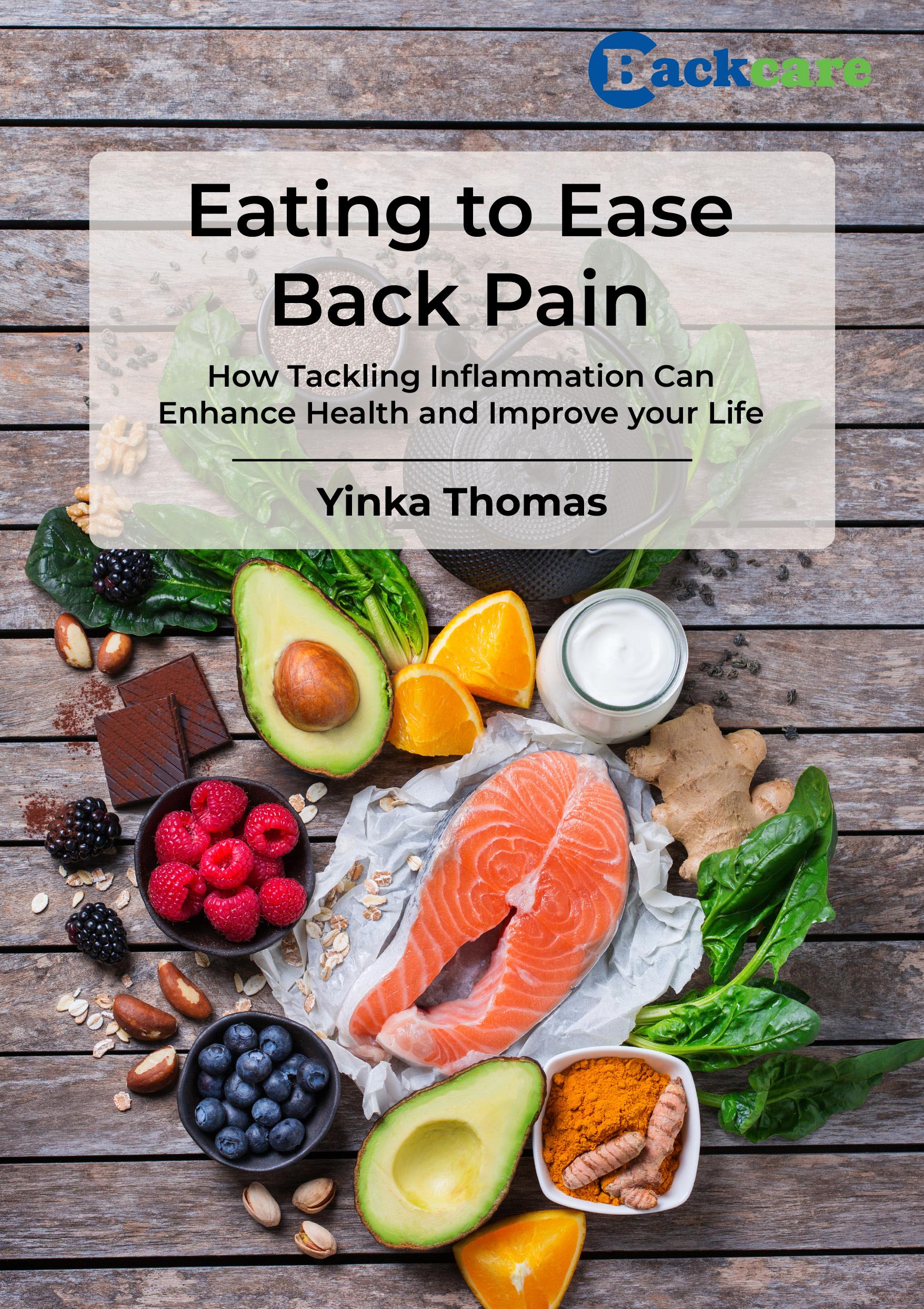

Eating to Ease Back Pain
How Tackling Inflammation Can Enhance Health and Improve your Life
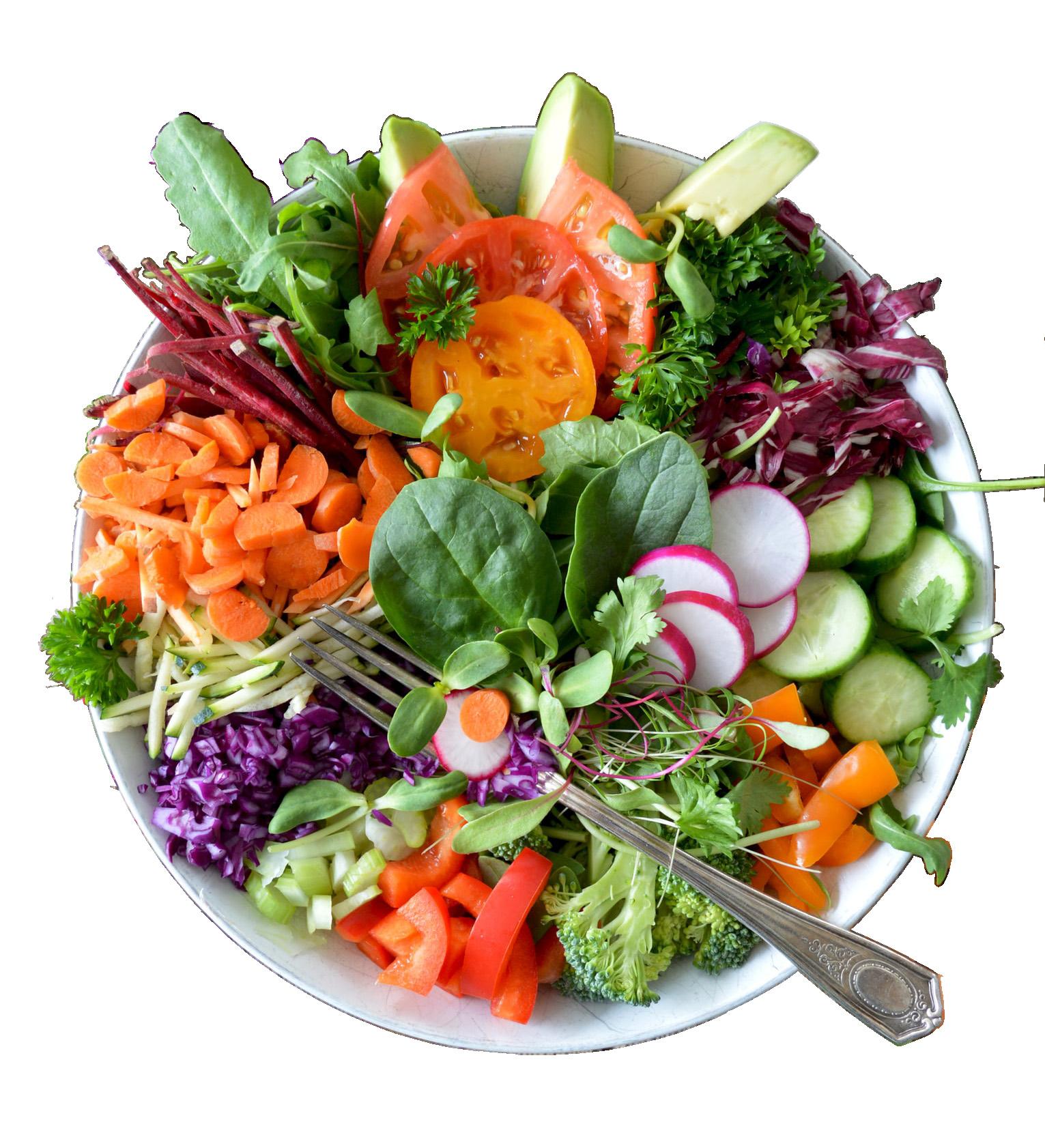

Eating to Ease Back Pain is the third booklet in a series published by BackCare to accompany our Back Care Awareness campaigns. Our 2025 campaign addresses the foods we can eat, or avoid, to assist musculoskeletal health. Whether you live with pain or not, there are benefits to adopting healthy eating habits. Dietary choices are something we should all consider to help reduce the risk of diabetes and heart disease etc.
BackCare is a charity founded to provide information to help prevent back injury and participates in research projects trying to identify the reasons for chronic low back pain. However, whilst prevention is better than cure, BackCare also understands that not all back pain is preventable.
BackCare also provides assistance as a signposting organisation to people living with back pain whether caused through wear and tear, injury, musculoskeletal disorders such as Scoliosis, Spina Bifida, Arthritis and Axial SpA or other serious underlying health conditions like Multiple Sclerosis, Parkinson’s Disease, or Cancer, for example. Further information about BackCare’s work can be found at:
https://backcare.org.uk/
The information contained in this booklet is provided for general purposes and is not intended as medical advice. The author and publisher are not responsible for any specific health needs that may require medical attention. If you have any underlying health problems, or are taking prescribed medications, you should ask your GP if you may follow the information in this booklet.
Copyright © Yinka Thomas 2025
Yinka Thomas has asserted her right under the Copyright, Designs and Patents Act 1988 to be identified as the author of this work. All rights reserved. No part of this publication may be reproduced or transmitted in any form or by any means, electronic or mechanical, including photocopying, recording, or by any information storage and retrieval system without written permission from the author and publisher.
Introduction
If you are one of the people who experiences it, you will not be surprised to discover that there are over 9 million people in England who are living with chronic low back pain (Health Profile for England, 2019).
Low back pain (LBP), described as pain between the lower ribs and the buttocks, affected 619 million people globally in 2020. It can be acute back pain – lasting for a short time, sub-acute – lasting a little longer, or chronic back pain – lasting for a long time. It can also be specific or non-specific. Specific LBP is caused by a particular disease or structural problem in the spine, or when pain radiates from another part of the body. Non-specific LBP occurs when it is not possible to identify the cause of the pain. LBP is nonspecific in around 90% of cases according to the World Health Organisation (WHO).
Whether it is LBP or pain in the upper back / neck region, it can be a symptom of wear and tear, or strain in the muscles or tissues of the spine. If you have not discovered the cause of your back pain, so have no specific treatment, there is a lot that you can do to speed up your recovery, including:
• activities
Staying active and trying to continue as much as possible with daily
• class of painkiller is not suitable for everyone so read the patient information leaflet or speak to your GP first
Taking an anti-inflammatory medicine like ibuprofen, although this
• tea towel to reduce pain and swelling
Using an ice pack (a bag of frozen peas works well too) wrapped in a
Trying some
• exercises 1 and stretches for back pain
• eliminating pro-inflammatory foods
Changing your diet to include more anti-inflammatory foods and
This last recommendation is based on an increasing body of evidence showing that chronic inflammation is linked to back pain, as well as many diseases and conditions including heart disease, cancer, stroke, dementia, and autoimmune disease.
How do you know if your back pain is linked to inflammation? According to the NHS 2, patients should be considered to have inflammatory pain if they answer positively to 4 or 5 of these questions:
Age of onset below 45 years 1.
2.
3.
Pain that comes about gradually and subtly
Pain for longer than 3 months
Early morning stiffness (over 30 minutes) 4.
Pain improved by exercise 5.
Pain not improved by rest 6.
Pain at night, with improvement on getting up and moving around 7.
Pain that is improved by anti-inflammatory medicines (non-steroidal 8. anti-inflammatory drugs, NSAIDs) such as ibuprofen
For most low back pain, self-help is key to recovery, and when it comes to tackling inflammation, diet is a key weapon in your arsenal. What you do

with the onset of pain is a strong predictor of outcome, and taking a holistic approach, with nutrition as your foundation, ensures that you stay in control, and can help ease, and even overcome your back pain.
About the author:
Yinka Thomas MSc RNutr.
Yinka lectures in Nutrition at Middlesex University and is a Public Health Nutritionist for a London borough.

Links between an inflammatory diet and back pain
Scientists have shown that a pro-inflammatory diet may be associated with the prevalence of LBP. In a study conducted by the University of Pittsburgh 3 in the USA, researchers used a dietary inflammatory index (DII) to provide an estimate of the effect of diet on inflammation. It was calculated by taking into account the amount, and frequency, of the consumption of pro-inflammatory foods such as sugary foods, fast foods high in sugar, salt and fat, ultra processed foods (UPFs), and sugary drinks.
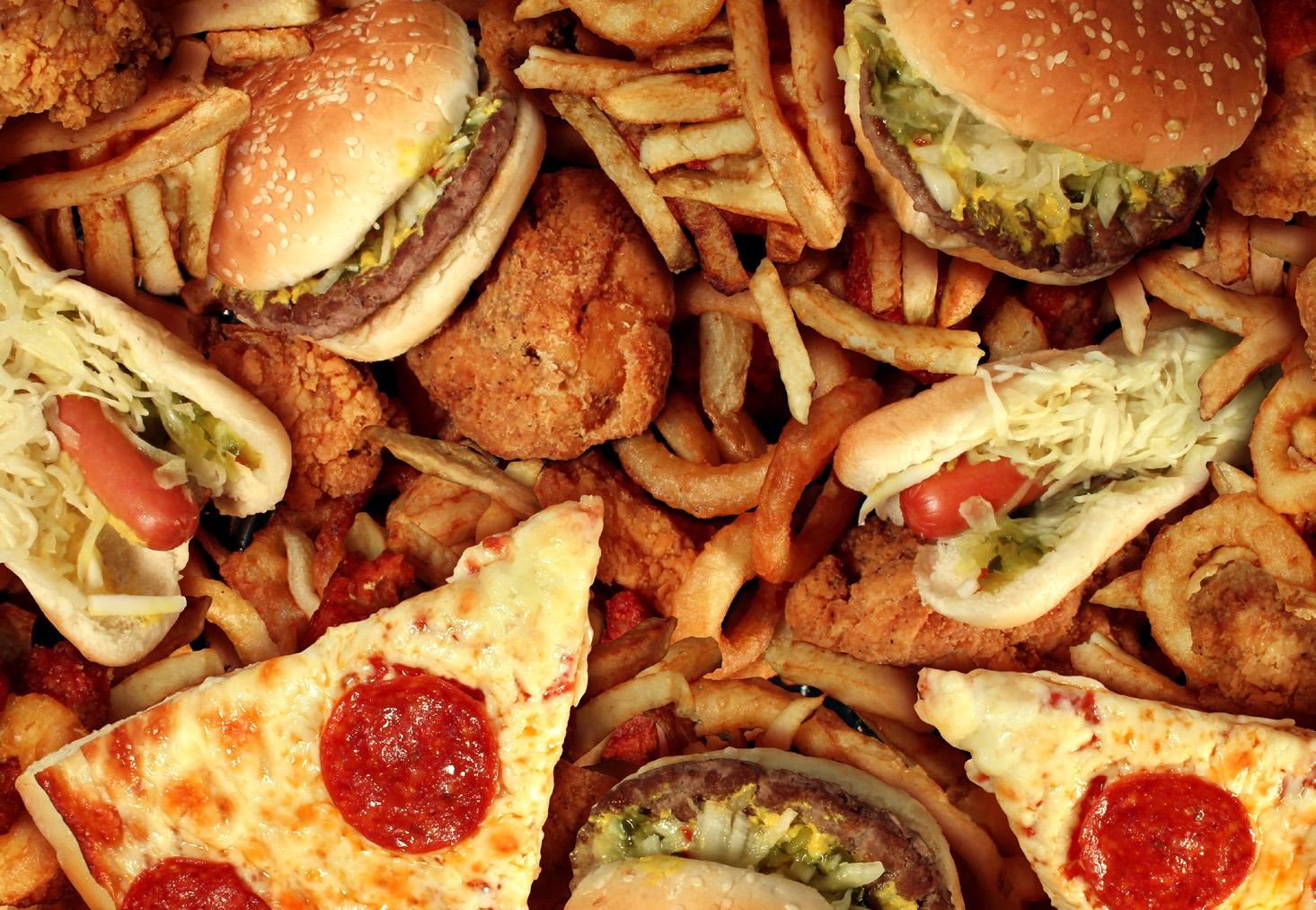
They used the index to examine the diets of nearly 4000 adults who suffered from LBP, using data from the National Health and Nutrition Examination survey database, and assessed the association between LBP, dietary inflammatory index scores and other variables. They asked participants if they had experienced pain in the previous 3 months to the survey, and if the pain had lasted for at least 24 hours.
The researchers concluded that participants with the highest DII scores had significantly higher experiences of LBP when compared to the lowest DII scores. Patients in the fifth quintile (highest) of the DII had a 42.4% higher risk of having LBP compared to patients in the lowest quintile. Researchers also noted patients had a higher chance of experiencing LBP in quintiles two to four
compared with those in the first (lowest) quintile.
Other studies using the DII have produced similar results, including a study involving over 7000 Korean adults 4 experiencing LBP. Although these studies add to the evidence that for a significant portion of the population of patients suffering LBP, their diet is a significant factor contributing to their symptoms, more research is needed because they don’t determine causality. However, there is enough evidence to show that certain diets may contribute to many diseases and painful conditions.
What is inflammation?
Inflammation is a process of the immune system that protects us and helps us heal.
Inflammation is the activation of the immune system in the body. It is
• measured by the levels of cytokines in the body – signalling molecules that act as messengers – that go to the area of injury or infection
If we cut ourselves, there is a response to that wound that first stops
• the bleeding, it throbs a bit then white blood cells (leucocytes) move to the wound to prevent any infection
• tissue, and summoning neutrophils which kill invading organisms, ingest them, then engulf and destroy them using enzymes within the cell (a bit like Pac Man, for those of a certain age!)
•
Scavenger cells called macrophages then go in and clean up invading
The default state for the immune system is to be constantly activated,

however we have buffers that stop the constant activation of the macrophages
With chronic inflammation, these buffers fail, and the environment • fools the white blood cells into thinking that they should be staying alive and they don’t leave and build up within tissues
There is a link between chronic inflammation and lifestyle factors such • as smoking, being overweight and obese, sedentary behaviour, and poor dietary habits
How to counter inflammation
Move your muscles and keep them strong – don’t sit for long periods 1. of time. Even if you fulfil the recommended 150 minutes of aerobic physical activity per week, if you sit for 8 or more hours per day, you negate all that good work. When muscles move, they produce myokines, which instruct the immune system to be less inflammatory. Being sedentary means fewer myokines and physical activity is one of the first steps to alleviating LBP. So try to get up and move around for 5 to 10 minutes every hour if you have a job that involves sitting for long periods. Muscle is a major educator of the immune system, so using them means more myokines which keep the immune cells like macrophages in check. So move, and keep your muscles strong, which not only helps tackle your back pain, it also dampens inflammation.
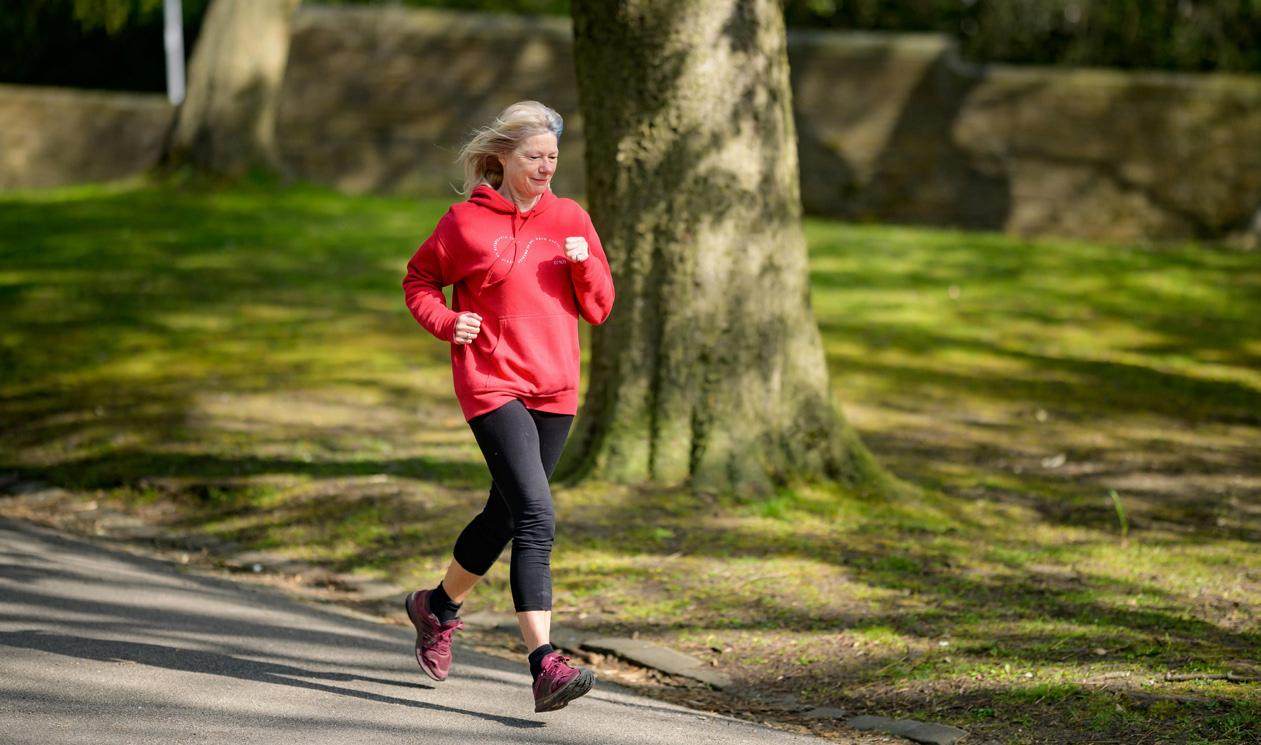
Keep exercising as you age – one of the markers of how youthful your 2. immune system is, is the amount of lymphocytes produced by the
thymus (an organ just above the heart that is an important part of the immune system). The thymus starts to shrink after the age of 20, but those who exercise well into older adulthood (50s, 50s, 70s), have the same thymus output of those in their 20s

Maintain a healthy weight and reduce excess fat – inflammation
3. has other sources rather than just the immune system, and fat tissue (adipose tissue), is one of those sources. Fat tissue produces inflammatory signals, and the more excess fat we have, the more it drives inflammation, and so the leaner we are, the less likely we are to be in that inflamed state. That’s easier said than done you might think, and yes I’m not saying that losing excess fat is easy, and I’m also not saying that you go on a diet. Instead try to follow the dietary guidelines in this booklet, and combined with the enhanced physical activity that keeps muscles strong and moving, the body will respond by burning up the excess fat. It’s not overly hard, but it will take discipline and patience

Reduce stress – stress produces cortisol, which suppresses the immune
system and reduces muscle. And as we age, we produce less of another hormone called DHEA, which counters cortisol. So the more stressed we are, the more pro-inflammatory cortisol we produce. Breathing exercises are good for reducing stress, you simply breathe in through your nose for a count of 4, hold that breath for a count of 2, and breathe out through your mouth for a count of 4. This simple exercise, done for a few minutes, has been shown to reduce stress

5. – see details on pages 32-35
Eat more anti-inflammatory foods and fewer pro-inflammatory foods
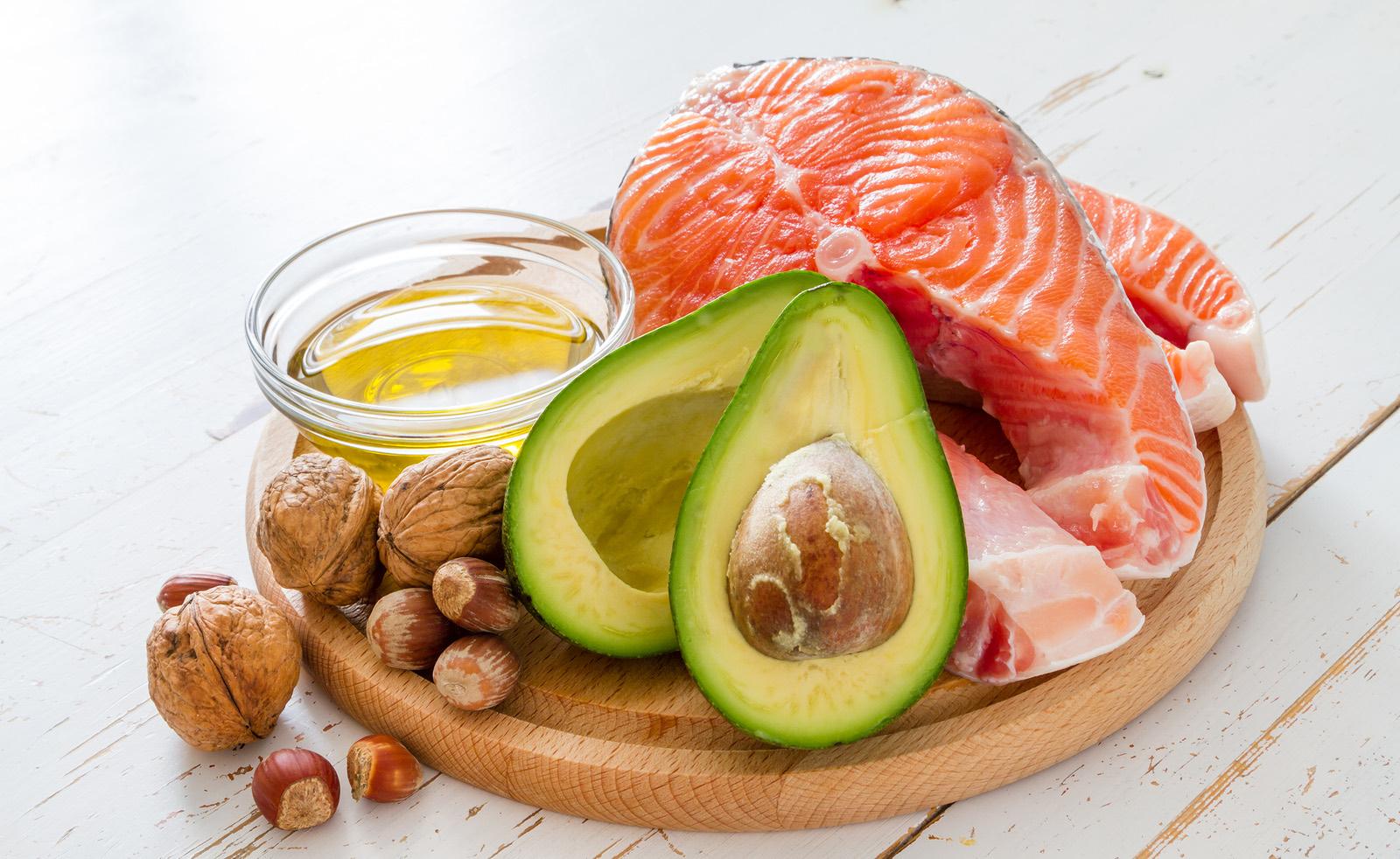
Know about food - Nutrition basics
Nutrients are compounds found in food that are essential to a healthy body and a healthy life. They provide us with energy, they give us the building blocks for the body to repair and grow, and they include the substances necessary to regulate the many chemical processes that we need to stay alive.
There are seven major nutrients:
Carbohydrates
Fats
Protein
Vitamins
Minerals
Antioxidants
Water
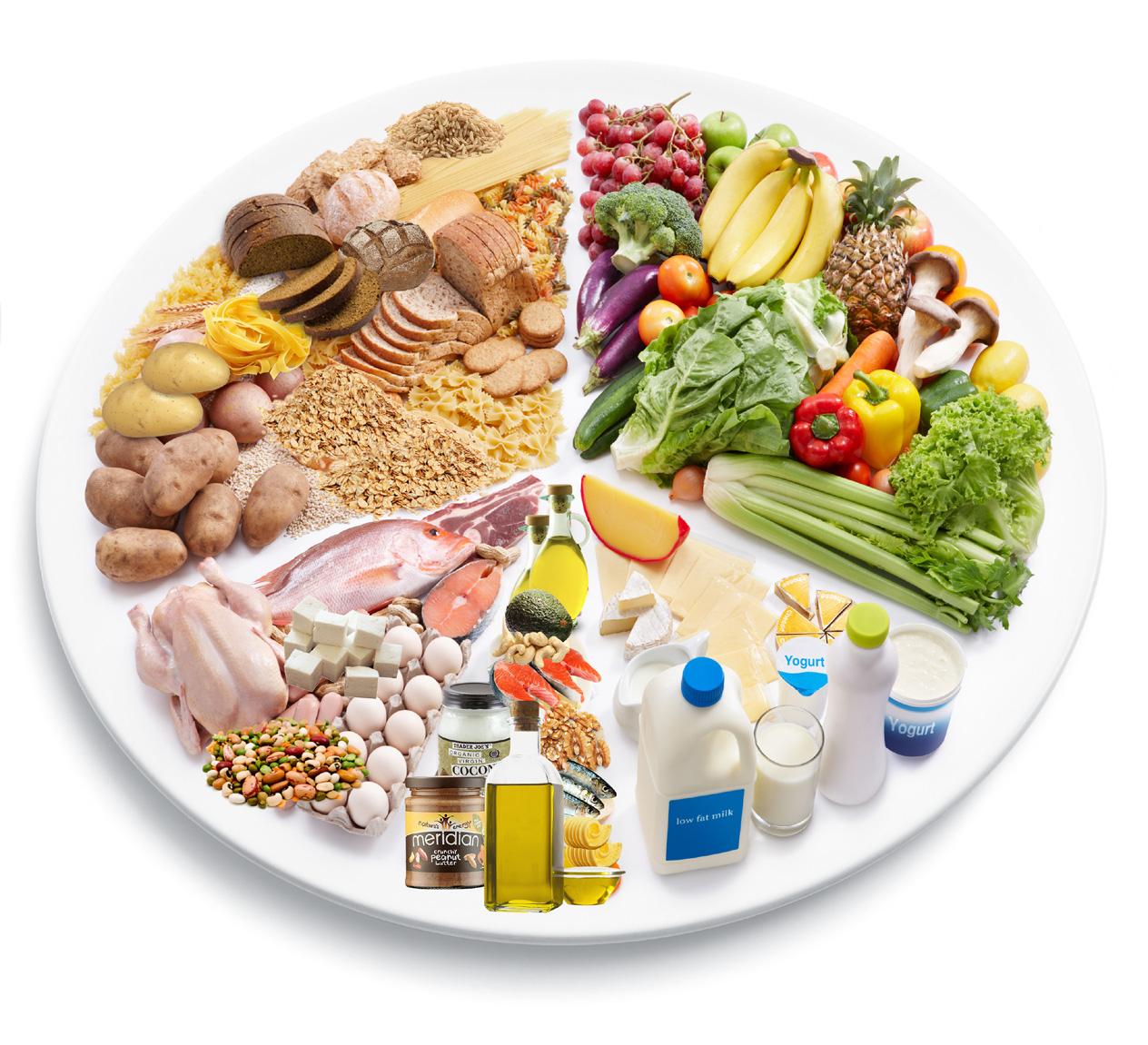
Carbohydrates, fat and protein (and water) are macronutrients, meaning that the body requires them daily in tens of grams.
Vitamins, minerals and antioxidants are micronutrients, meaning that they are required by the body in minute amounts – milligrams and micrograms.
Together, these nutrients are found in the wholesome, colourful, tasty foods that make up a balanced diet.
What is a balanced diet?
Simply, a diet that contains a variety of fresh foods from the main food groups:
•
•
Fruit and vegetables
Protein
• Fats
Carbohydrates (wholegrain and unprocessed)
•
•
Dairy and alternatives
Eating foods plentifully from these groups will provide all of the nutrients required for optimum health. Balanced diets consist of balanced meals, and a balanced meal consists of a portion of carbohydrate, protein, fat, and vegetables.
Carbohydrates
Carbohydrate foods – sugars and starches are the body’s preferred form of energy and break down into glucose in the bloodstream, which is either stored in the muscles and liver or fat cells. Therefore, it’s important to have an understanding of carbohydrate foods in order to maintain a healthy weight.
Sugars and refined carbohydrates break down quickly, and wholegrain starches (which have more fibre) break down slower, providing fullness and more sustained energy over a longer period of time.
Sugars Starches
Sugars break down very quickly into glucose in the bloodstream
They raise blood glucose levels very quickly causing the body to release insulin
Insulin is released and removes glucose from the bloodstream and promotes storage in:
Muscles • Liver •
Excess glucose is stored • in the fat cells after being converted into fat (causing weight gain)
Starchy carbs break down more slowly, providing a slow release of energy (unless they are refined)
This keeps you fuller, and more satiated
Insulin is released slowly so doesn’t remove glucose from the bloodstream as quickly
Glucose is stored in the muscles and liver, and depending on the quantity consumed, excess glucose is less likely to be stored in fat cells
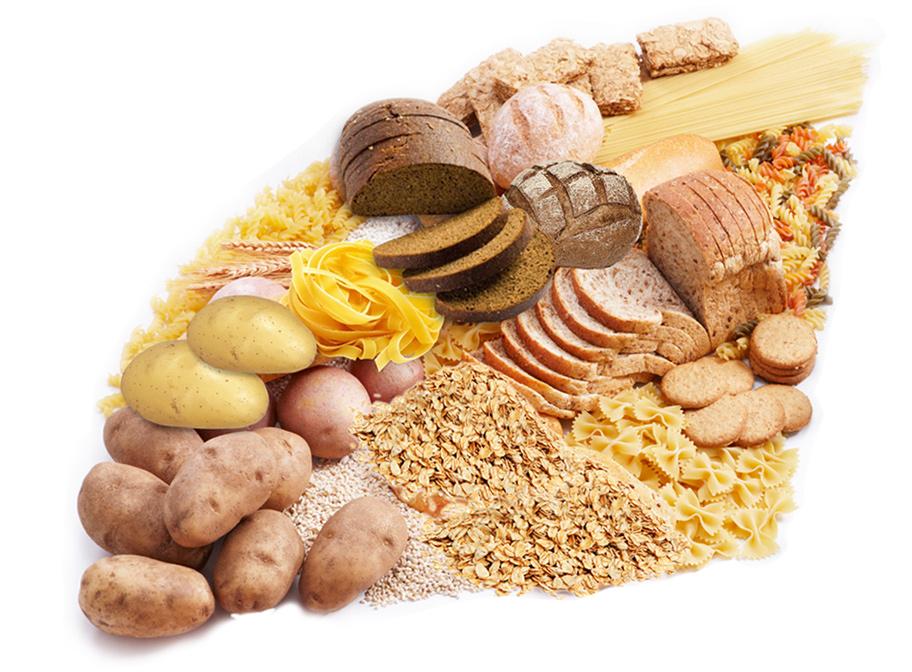
Insulin
Insulin is the hormone that allows the body to use glucose for energy. It is produced in the pancreas, and is released after a meal containing
carbohydrate causes blood glucose levels to rise. Insulin receptors on cells in the body cause cells to absorb the glucose and use it for energy. Insulin is also the main fat storage hormone in the body, telling fat cells to store excess glucose as fat, and preventing stored fat from being broken down.
Cells can become resistant to insulin so that more and more needs to be produced to regulate blood sugar levels. This can cause the cells in the pancreas to burn out, and this situation of high blood sugar levels and insulin resistance can develop into the disease Type 2 diabetes.
In some people, the body attacks the cells in the pancreas that produce insulin so that it cannot be produced and this disease is Type 1 diabetes.
What else causes high blood sugar levels other than sugar?
Refined grains such as white flour, white rice and refined cereals can cause blood sugar levels to rise quickly, and sometimes even faster than sugary foods. There are two main reasons for this:
Refined carbs have been 1. stripped of almost all their nutrients, vitamins, minerals and fibre are all gone, making them ‘empty’ calories. For example, white flour constitutes the starchy part of the wheat grain (endosperm) and the protein part (gluten). The nutrients found in the bran and germ – which would slow down its conversion into glucose, are discarded
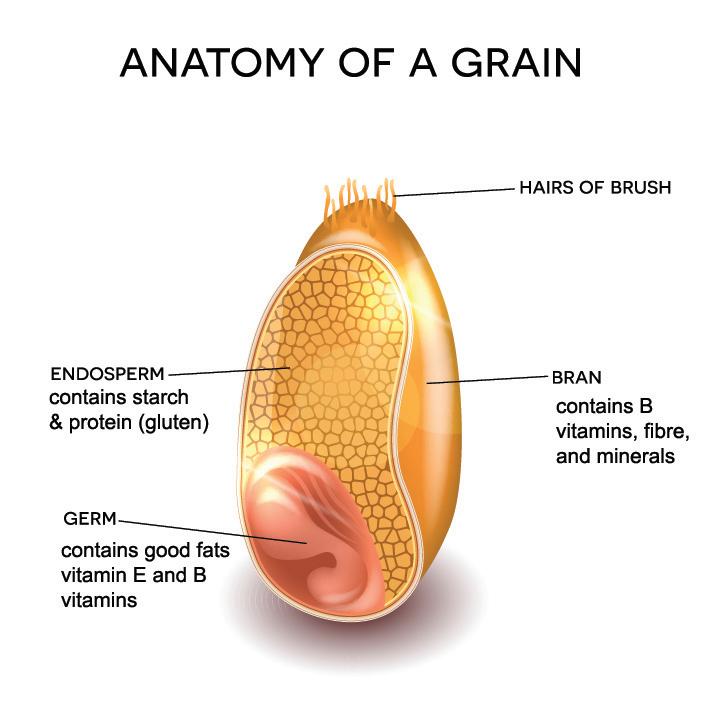
Many refined carbs are processed into tiny particles. In fact, grains 2. of white flour are so small that they resemble dust, and this gives enzymes an abundance of surface area to work on when they break down in the digestive process, causing a rapid rise in blood glucose levels. If that white bread contained kibbled grains of wheat, or seeds, the body would have to work harder to break it down thus preventing a spike in blood glucose. Therefore wholegrain and granary breads are healthier choices
These factors add up to give refined carbohydrates a high glycaemic index, which I will explain next.
Glycaemic Index
The glycaemic index (GI) is a ranking of carbohydrate foods (and
• drinks) according to the rate which they break down into glucose in the bloodstream
• reference
GI runs from 0–100 and uses glucose, which has a GI of 100, as the
Carbohydrates with a low GI value – less than 55, are more slowly
• digested, absorbed and metabolised and cause a lower and slower rise in blood glucose and, consequently, insulin levels
• in blood glucose
Medium GI foods have a value of 55-69 and cause a slightly higher rise
• blood glucose
High GI foods have a value of 70 or more and cause dramatic rises in
• the absorption of carbohydrate
Fat, protein and fibre in foods lowers the GI because they slow down
• fries, for example, have low to medium GIs because of their high fat content
Not all low and medium GI foods are healthy – chocolate and French
Combining foods with different GIs, and always having some
• vegetables, protein and fibre with a meal, alters the overall GI of a meal
The amount of carbohydrate you eat has a bigger effect on blood
• glucose levels than GI alone. For example, pasta has a lower GI than watermelon, but pasta has more grams of carbohydrate than watermelon, so if you eat similar amounts of either of these two foods, the pasta will have more of an impact on your blood glucose levels
Glucose 100
Rice cakes 89
Jacket potato – flesh only (with skin will be lower because of fibre) 83
Potatoes, mashed
Cocopops
Weetabix
Shredded Wheat
Glycaemic load
Glycaemic load (GL) was created because the GI has its limitations. For example, let’s look at watermelon. I have seen articles that tell you to eliminate this delicious fruit from your diet because of its high GI value of 72. However, this is misleading. GI is based upon servings containing 50g of carbohydrate, but to get 50g of carbohydrate, you’d have to eat almost a whole watermelon!
GL takes into consideration a food’s GI as well as the amount of carbohydrates per serving. A watermelon has only 10g of carbohydrate in a serving; therefore GL is worked out by taking the GI value (72) and multiplying it by the actual number of carbohydrates in a serving (10) therefore the glycaemic load is 0.72 x 10 = 7.2.
By contrast, a cup of cooked pasta has a GI of 71 and 40g of carbohydrates giving it a GL of 0.71 x 40 = 28. So GL varies with the serving size.
One last thing about Carbs: Resistant Starch
• more resistant to digestion than other starches
Resistant starch is a form of starch found in carbohydrate foods that is
Unlike ordinary starch, it is not digested in the small intestine like
• ordinary starch, therefore does not raise blood glucose levels, so the release of the fat-storing hormone insulin is minimised
Instead resistant starch is fermented in the large intestine by bacteria,
• which produce butyrate – a short-chain fatty acid (SCFA), which can be used for fuel
• been shown to enhance the immune system
Butyrate promotes the metabolism of fatty tissue for energy. It has also
As it takes longer to break down in the body, it fills you up for longer
• and has a lower calorie count (carbs are 4 calories per gram, resistant starch is 2 calories per gram)
• chickpeas and lentils), which the body takes longer to break down than amylopectin starch (found in other varieties of rice such as long grain and risotto, wheat products like bread and pasta, and potatoes)
•
Resistant starch is high in amylose starch (found in basmati rice, beans,
Resistant starch also has a low GI
To increase the amount of resistant starch in foods, pre-cook pasta, potatoes, rice and other starchy foods, refrigerate, and then eat the next day. Studies have shown that re-heating doesn’t reverse the starches back from resistant to regular.
When you pre-cook pasta, boil for 2 minutes only, then drain immediately and refrigerate. When you re-heat in a sauce the pasta will soften to ‘al dente’.
Protein
Protein is used very little for fuel – carbohydrates and fats are our main sources of fuel for energy. Protein is the body’s chief building material. Our muscles, organs, bones, cartilage, skin, hair, nails, blood and antibodies are all made in part from protein.
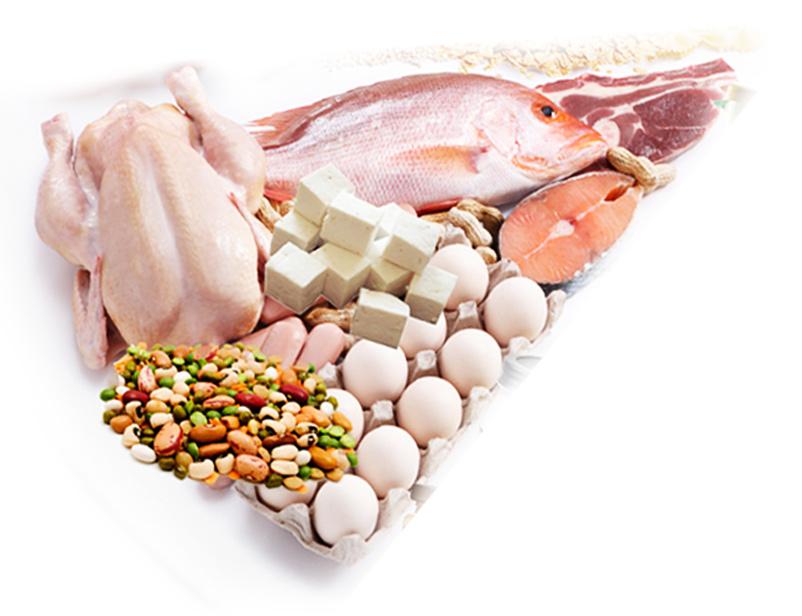
Next to water, protein is the most plentiful substance in your body, and not consuming adequate amounts of it can lead to loss of skin and muscle tone, stretch marks, thinning hair, and weak nails. However, some of this can be reversed once a plentiful supply of protein is added to the diet.
Protein is composed of 20 amino acids, all vital for healthy tissue. The human body can manufacture only 11 of these amino acids, and 9 are termed essential (or indispensable) amino acids and must be derived from food. We cannot build proteins without these essential amino acids.
The complete proteins that contain the 9 essential amino acids are mainly derived from animal foods: meat, poultry, fish, eggs, milk, dairy, and cheese. There is one plant-based food that gives us our essential amino acids – soy.
Other plant foods give us some but not all of the essential amino acids; these are known as incomplete (or non-essential or indispensable) proteins, and include: beans, lentils and chickpeas, nuts, and in smaller amounts, grains and vegetables.
Quality protein
Quality protein is important, and by that I mean minimally processed protein foods – chicken breasts, thighs and legs instead of nuggets, cuts of meat instead of sausages and salami, fish fillets and whole fish instead of breaded fish. And not too much chicken that are fed a diet high in grains that results in increasing the proportion of pro-inflammatory omega 6 fats in their flesh.
Fish – especially oily fish like salmon, sardines, kippers (herring), and mackerel are a good source of protein because they contain healthy, anti-inflammatory omega 3 fats. However, the problem with fish today is the levels of mercury, dioxins, and other harmful chemicals found in some fish. So in order to navigate it, I would simply recommend consuming more of the smaller fish such as sardines, anchovies, and smaller herring, all of which are oily fish so contain healthy omega 3 fats, but are lower down in the food chain and less exposed to harmful toxins. Larger fish like salmon, sea bass, cod, haddock and pollock are also recommended, although I do avoid tuna because of the mercury found in this larger fish.
How much protein do we need?
We need approximately 0.8-1g of protein for each kg of bodyweight daily. Therefore a person weighing 60kg requires between 48–60g of protein daily. Older people need slightly higher daily protein requirements.
Here is a guide to how much protein different foods yield so you know that you’re getting your daily requirement:
Fat has more than twice as much energy as carbohydrates, and because of this we are often told to regard carbohydrate as the primary source of energy and dramatically restrict fats or cut them out altogether. Nothing could be further from the truth.
Fat is more than a good energy provider. It also contains:
• focus, concentration, memory, and behaviour
Essential fats: used in the brain and nervous system, essential for
• hormones)
•
Sterols: precursors of a number of hormones (including the sex
The ability to metabolise the fat-soluble vitamins A, D, E and K
There are four kinds of fats:
Saturated (which are not as bad as you’ve been led to believe)
•
• Monounsaturated (which are relatively stable, good to cook with)
• are essential fats, but never cook with them)
•
Polyunsaturated (which are highly unstable; omega 3 and omega 6 fats
Trans fats in the form of partially hydrogenated oils (avoid at all costs)
Saturated fats
Saturated fats can be distinguished as being solid at room temperature. Examples are meat fat, butter, lard, cream, coconut and palm oils. They have been much maligned in recent years as being ‘artery-clogging’ and responsible for heart disease. However, studies show that trans fats from chemically processed polyunsaturated oils are more likely to cause arterial plaque and heart disease than saturated fats. Saturated fats provide the building blocks for cell membranes and hormones. Having some fats as part of a meal in the form of a rich sauce, or stir-fried vegetables, or kippers or salmon, slow down the absorption of the meal, giving us a more sustained release of energy. They also help maintain the body’s supply of important fat-soluble vitamins A, D, E and K. Saturated fats are highly stable and their chemical structure does not change when they are heated. This is because all the carbon atom linkages are filled – or saturated – with hydrogen. So they do not normally go rancid.
Our bodies can make saturated fat from carbohydrates, particularly when we consume a diet high in refined carbohydrates and sugar. Body fat does not
come directly from dietary fats, it is predominantly from any excess sugars that have not been used for energy. The source of these excess sugars is any food containing carbohydrates, particularly refined sugar and refined grain products.
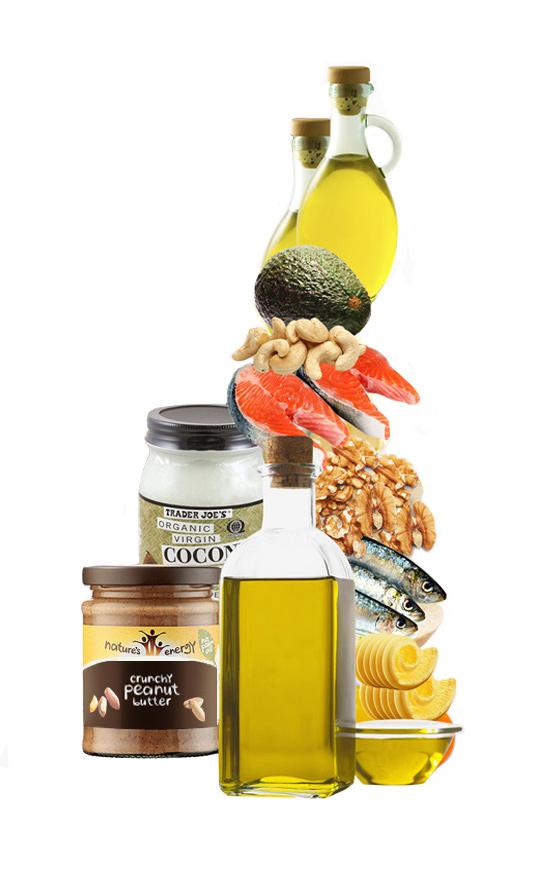
Some saturated fats have important antimicrobial properties, especially lauric acid which is found in coconut oil, and has antiviral, antibacterial and antifungal properties, and is particularly effective against the flu virus. This is because it ultimately breaks down into monolaurin, which can prevent viruses from replicating. It is an effective immune booster when taken orally or applied topically.
Monounsaturated fats
Monounsaturated fats such as olive oil, rapeseed oil, and ground nut oil are liquid at room temperature and become semi-solid if chilled. Like saturated fats, they are relatively stable, and do not go rancid easily hence can be used in cooking.
The monounsaturated fatty acid most commonly found in our food is oleic acid – the main component of olive oil, as well as the oils from camellia seed,
almonds, pecans, cashews, peanuts and avocados. These fats resist damage from free radicals and keep our blood vessels soft and pliable.
Extra virgin olive oil, which is minimally processed, is another very healthy oil that you should consume regularly. It is high in antioxidants that have been shown to reduce LDL cholesterol (bad cholesterol), and protect the body against from free radical damage. Oleic acid, which is the main fatty acid in olive oil, can reduce inflammatory markers such as C-Reactive Protein, a risk factor for heart disease.
Polyunsaturated fats
Polyunsaturated fats such as sunflower oil and most vegetable oils are liquid at room temperature and only become firm if processed or put in a freezer. They have two or more pairs of double bonds and are highly unstable, which means that they can change in chemical structure when exposed to heat, light and oxygen. So we shouldn’t cook with them!
The two polyunsaturated fatty acids found most frequently in our foods are linoleic acid (LA) with two double bonds (also called omega 6), and alphalinolenic acid (ALA), with three double bonds (also called omega 3). Our bodies cannot make these fatty acids and hence they are called ‘essential’, and we must obtain them from the foods we eat.
The unpaired electrons at the double bonds makes polyunsaturated fats highly unstable and reactive. They go rancid easily, particularly omega 3 linolenic acid, and must never be heated or used in cooking. Yes, that sunflower oil that we’ve been encouraged to cook with because it contains polyunsaturated fats that are good for your heart, are not good for us at all. They are only good for us when they are unrefined, cold-pressed and unheated.
These fats are vital for the brain and nervous system. Omega 3 oils are converted in the body into DHA and EPA – vital for memory, mood, concentration and behaviour. Our brains are 40% polyunsaturated fats, and breast milk is also high at 30%. Omega 3 fats are found in flax and pumpkin seed oils, and in oily fish such as mackerel, salmon, tuna and herring. Omega 6 fats are found in sesame and sunflower seed oils and poultry.
Although essential fats are important, our modern diet contains far too many omega 6 fats, which promote inflammation. Try to avoid excess consumption of omega 6 fats from refined sunflower and corn oils, processed foods, and chicken.
One reason polyunsaturated fats cause so many health problems is that they tend to become oxidised or rancid when subjected to heat and oxygen when cooking and processing. Rancid oils are characterised by free radicals, which attack both cell membranes and red blood cells and cause damage to DNA strands, thus triggering mutations in tissue, blood vessels and skin. Free radical damage also causes wrinkles and premature ageing, and in the blood vessels initiates the build-up of plaque.
The modern diet contains too much of omega 6 fats; it also contains too little omega 3. As mentioned, this essential fatty acid is necessary for brain and nerve cell structure and function, and maintaining proper balance in hormone production. Deficiencies have been associated with asthma, heart disease and learning difficulties. The best sources of omega 3 are smaller oily fish, flaxseed oil, hemp seed oil, and some eggs where hens are fed a diet high in omega 3 grains.
Trans fats
Trans fats found in partially hydrogenated oils are polyunsaturated fats such as rapeseed or soy bean oils that are put through a process called hydrogenation or partial hydrogenation that makes them hard. They are used in processed foods as a cheap alternative to butter and cooking oils, because they increase shelf-life.
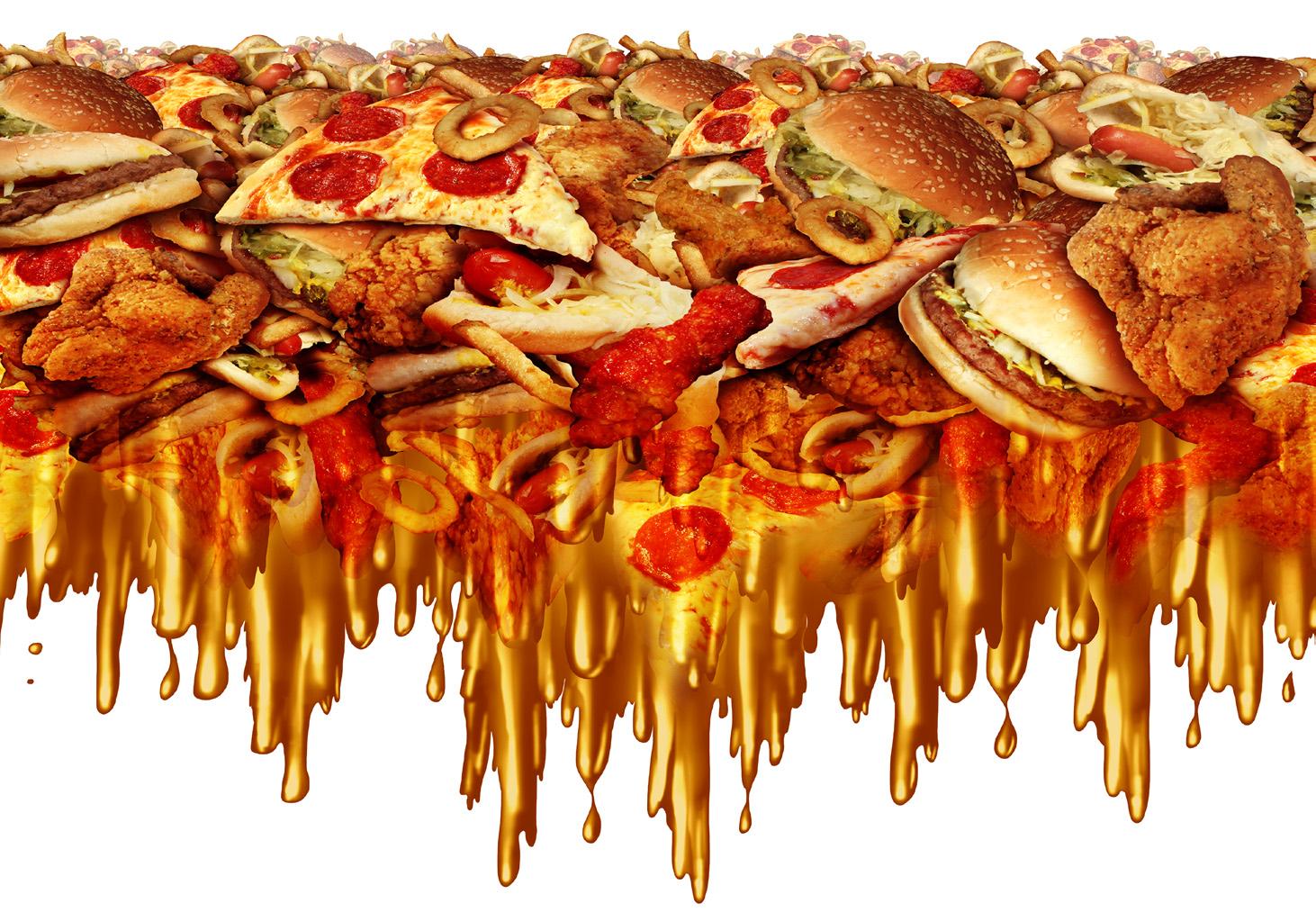
Our bodies treat trans fats as toxic saturated fats. This particular man-made fat does not occur in nature, and our bodies have not developed any mechanisms for metabolising or storing them. It simply doesn’t have the enzymes to break them down. As a result, once the trans fats from your meal are digested and enter the bloodstream, they cause free radical damage and inflame blood vessel walls. This causes the release of LDL cholesterol, which tries to repair the damage, but ends us thickening the interior artery walls which can ultimately lead to atherosclerosis and heart disease. Trans fats also increase risk of developing cancer, type 2 diabetes, dementia, and other degenerative conditions.
Avoid them where possible – and anything that says ‘partially hydrogenated vegetable oil’ on the label. This list includes most junk food, especially if it’s from a High Street chicken or pizza shop, where they use partially hydrogenated vegetable oils for frying.
Intermittent Fasting
Intermittent fasting has been shown to not only improve your body’s fat burning capacity, but it can also provide your brain with more energy, improving memory and learning functions such as focus and concentration.
During intermittent fasting, the body switches energy sources from glucose, which it derives from dietary carbohydrates, to fat cells, which stimulates activity and cell growth in the brain, and causes weight loss when it is burnt for fuel.
The body runs on energy from glucose stores in the muscles and liver for around 10 to 14 hours. When those stores run out, our bodies switch to fat stores, which are converted into compounds called ketones in the blood.
This is essentially the principle behind the keto diet. The body is temporarily put into ‘starvation’ state, encouraging it to draw on fat cells – rather than glucose – for energy. But it’s important to know that if you have a healthy, carb-rich breakfast such as porridge, fruit or wholegrain toast, the body will use this for fuel and fat burning won’t happen. It is important to have the long gap between dinner the night before and breakfast the next morning.
I usually have dinner around 8pm and breakfast around 12pm (I don’t skip breakfast, I just have it later). This is a gap of around 16 hours, but I wouldn’t expect you to start here. You will have to work your way up.
• morning and breakfast around an hour later than usual
Start with dinner at your usual time and have a tea or coffee in the
• slightly later, until you’ve built up a gap of at least 14 hours
Then work your way up by having dinner slightly earlier and breakfast
• Eat well
This will encourage your body to delve into its fat stores for energy
Knowing about food is key to eating well, so it’s important to get to grips with the nutrition basics outlined above. The key to achieving and maintaining a healthy weight and reducing excess fat, which is important for alleviating back pain, is having a healthy relationship with food.
What has my gut got to do with my back?
The health of your gut affects the whole body, and a poor diet, high in the foods that promote inflammation, increases inflammation and exacerbates your back pain.
We have all heard of good bacteria and bad bacteria. They reside in the large intestine and assist in generating energy from the food that we eat. The gut microbiome is made up of a diverse community of bacteria that carry out various functions influencing overall health and wellbeing, and the presence of certain bacteria is associated with inflammatory molecules that may bring about inflammation in various tissues around the body, including your back.
And regarding weight management, scientists have found further variation in gut bacteria amongst people who are naturally lean and can seem to eat anything without putting on weight, and people living with obesity who can eat very small quantities of food yet not lose weight.
‘Lean’ bacteria extract a certain amount of energy from food and excrete the remainder, whereas ‘obese’ bacteria extract every last bit of energy from the same amount of food. So, imagine if one person extracts two calories from every gram of carbohydrate that they eat whereas another extracts four calories. You can see that one might be leaner than the other (do you remember the difference in calories between resistant and ordinary starches? It’s the same!).
Lean bacteria are also able to make certain fatty acids like butyrate out of indigestible carbohydrates such as resistant starch and inulin which the body can use for energy and aids in fat-burning. And you don’t have to undergo a fecal transplant in order to gain more lean bacteria, you just need to ensure you eat foods that promote a good gut microbiome and eat resistant starch.
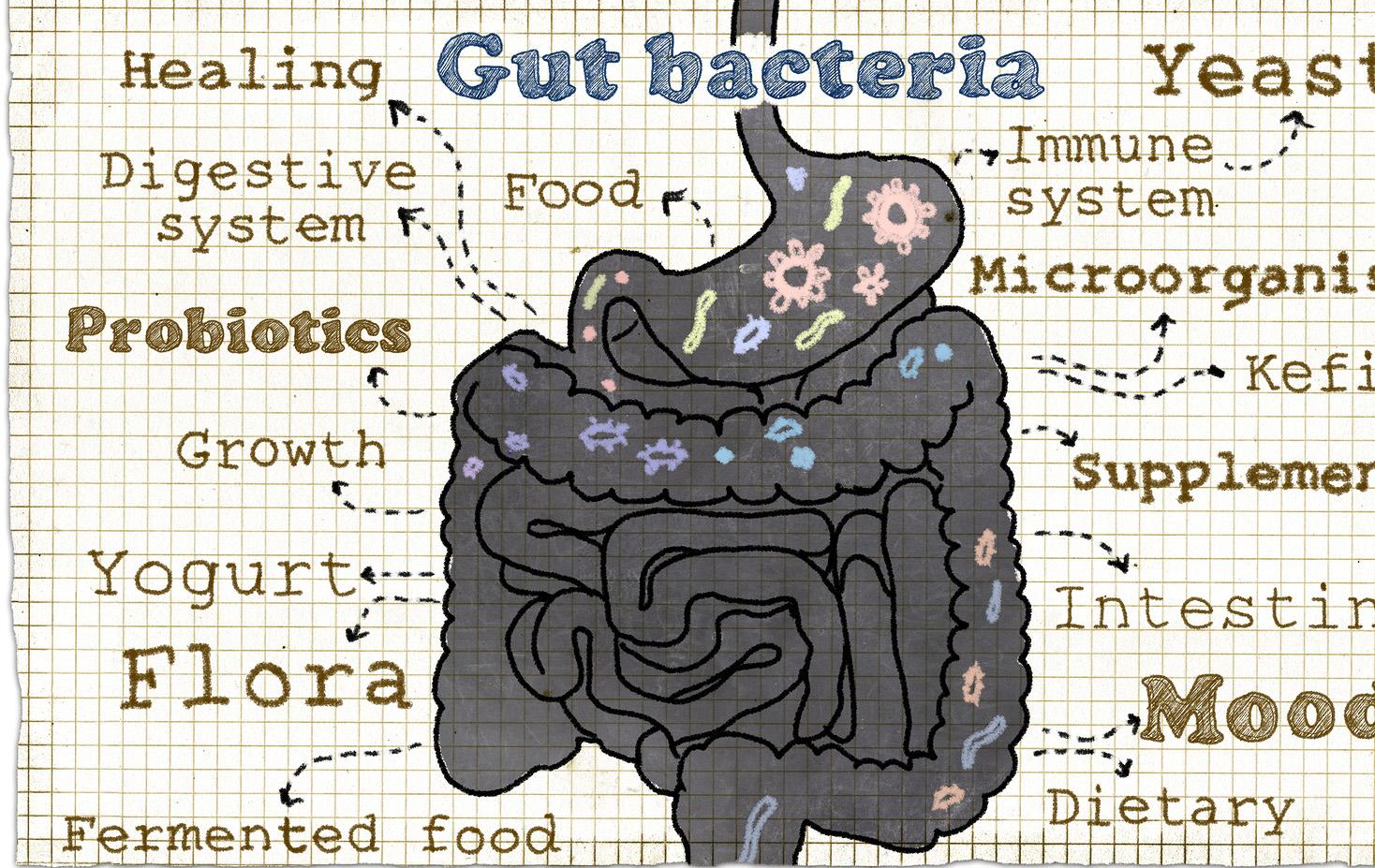
How to ensure a healthy gut microbiome
In order to ensure a healthy supply of lean bacteria it is important to eat foods that promote their multiplication – known as Probiotics, and to eat foods that supply food for the bacteria – Prebiotics. For example, lean bacteria can manufacture those short chain fatty acids like butyrate from vegetables, resistant starch and soluble fibre like inulin, whereas obese bacteria prefer foods like chocolate biscuits and cake, from which it will extract every bit of energy. So, it’s important to eat what lean bacteria like.
I would add to that a fermented yogurt like Kefir (there are many varieties in all supermarkets nowadays) also helps ensure a healthy microbiome, and other fermented foods and drinks such as kimchi, sauerkraut, pickles, and kombucha.
• Slows digestion of carbs
•
Increases beneficial gut bacteria
• Helps burn belly fat
Inulin also increases regularity and might cause wind when you first start taking it.
Try to eat a variety of probiotic foods, as well as foods high in fibre, which promote a healthy microbiome. Eat as many vegetables as you can, as well as fruit, wholegrains, and beans and pulses.
Anti-inflammatory foods – eat more of these
So many typical foods in the Western diet are pro-inflammatory: refined grains, sugary foods and drinks, processed meats, ultra processed foods, refined oils, saturated fats, artificial sweeteners. Studies have shown 5 that these foods contribute to inflammation.
Avoiding pro-inflammatory foods and including more anti-inflammatory foods has been shown 6 to help with lowering inflammation.
Some anti-inflammatory foods to increase consumption of include:
Food Properties
Oily Fish

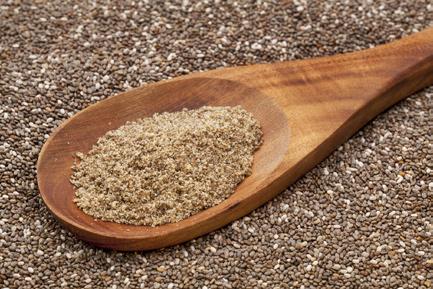
Oily fish such as sardines, salmon, kippers, anchovies and mackerel are an excellent source of the essential omega 3 fatty acids DHA and EPA (docosahexaenoic acid eicosapentaenoic acid), which are powerful antiinflammatories. Sardines are my number one because they’re packed full of other nutrients such as vitamins A and D, calcium, magnesium and iron, plus they are low down in the food chain so relatively free of other toxins. For salmon, when you can (if it’s on offer!) choose wild Alaskan salmon because farmed salmon is lower in these fats.
Walnuts, flax seeds, chia seeds Walnuts, flax and chia seeds are the plant world’s best source of omega 3 fats. They are rich in alpha linolenic acid (ALA), another of nature’s most powerful anti-inflammatories. Have regularly in yogurt, porridge, overnight oats, or low-sugar granola.
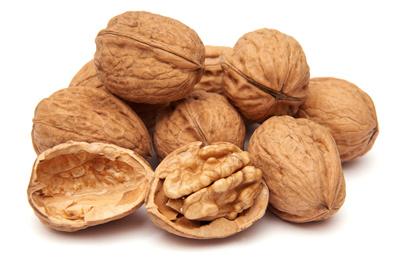
Food Properties
Berries, especially blueberries Blueberries are high in antiinflammatory and protective polyphenols that also protect against diseases such as cancer, heart disease, and dementia. Other berries to consume regularly are blackcurrants, blackberries, and strawberries.
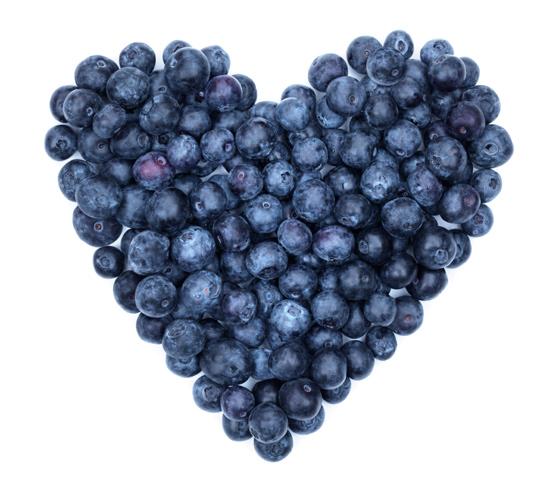
Olive oil
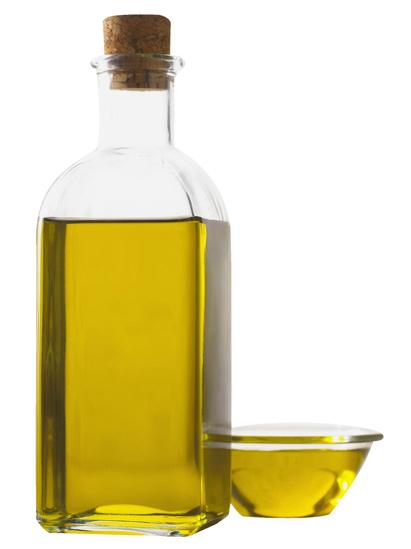
Cruciferous vegetables and leafy greens
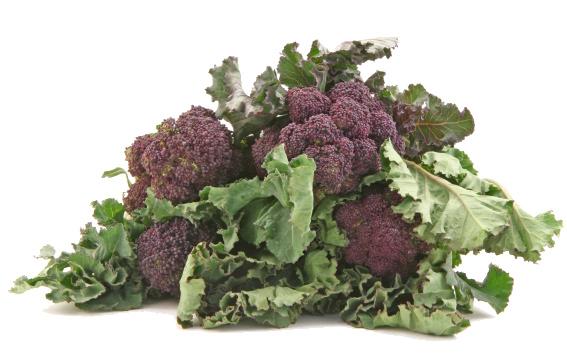
Olive oil has a rich supply of those protective polyphenols mentioned earlier. Also choose extra virgin olive oil, but it’s very expensive nowadays, so ordinary olive oil is an equally good choice if you’re on a budget.
Broccoli has so many protective properties from its polyphenols, and other anti-inflammatory substances such as sulforaphane and indole-3carbinol, which are both protective against cancer. Also consume spinach, cauliflower, greens, cabbage and kale.
Food Properties
Tomatoes
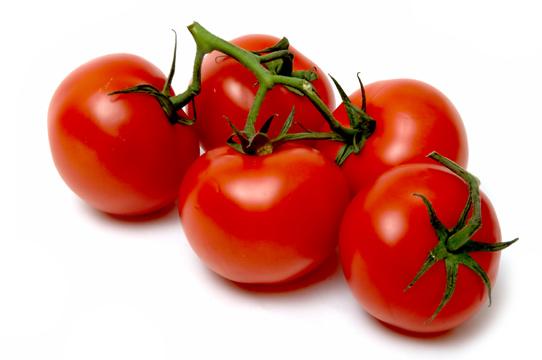
Sweet potatoes
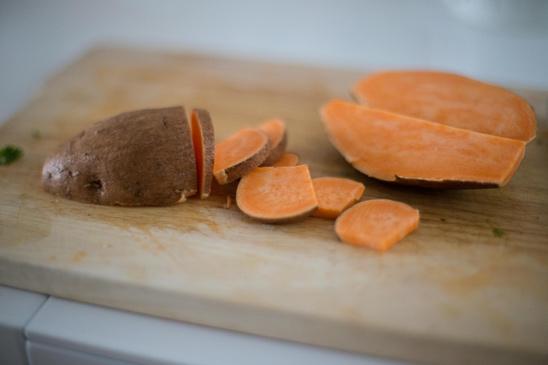
Turmeric
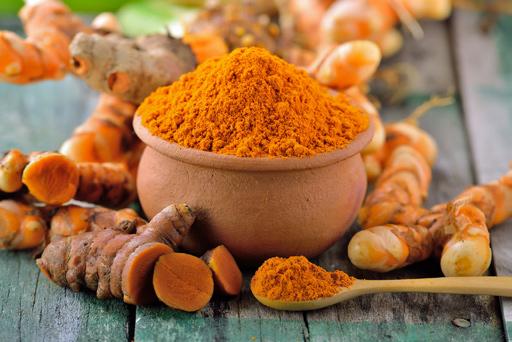
Ginger and garlic
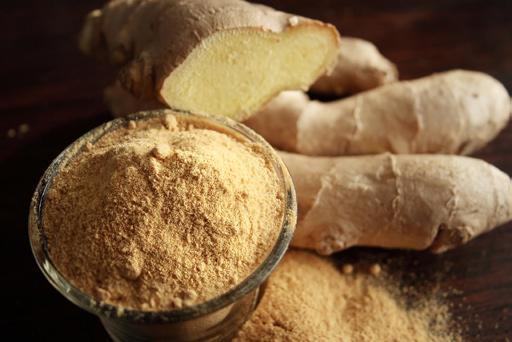
Tomatoes have several antiinflammatory properties due to being high in the antioxidant lycopene, plus vitamin C, and potassium. Lycopene is a powerful anti-inflammatory richest in tomato skins, and is best absorbed by the body when tomatoes are cooked.
Sweet potatoes are rich in the antioxidant beta-carotene, which gives them their orange colour, and is especially important for eye health. They are also rich in vitamins A, C and E.
Turmeric contains a potent antioxidant called curcumin, which also has anticarcinogenic properties.
Ginger and garlic also have antiinflammatory properties so are worth a mention.
Food Properties
Green tea
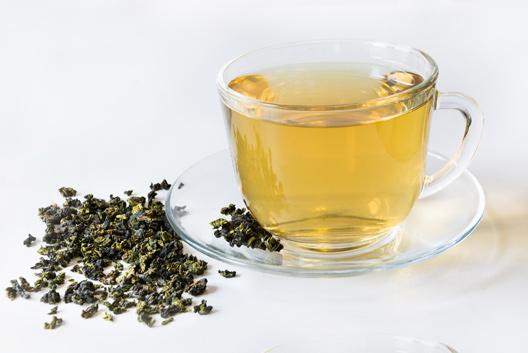
Green tea is high in protective polyphenols and has strong antiinflammatory properties. It also has fatburning properties so can help in weight management. If you’re not keen on hot green tea, try cooling and refrigerating as a refreshing and healthy soft drink.
Fruits, especially pineapple and papaya
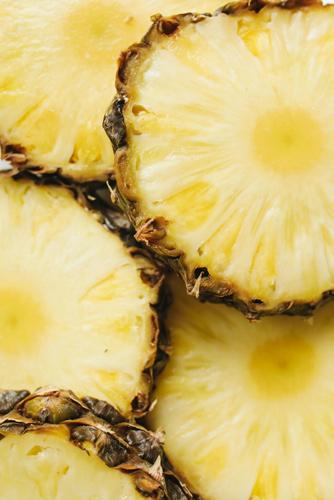
Foods high in fibre
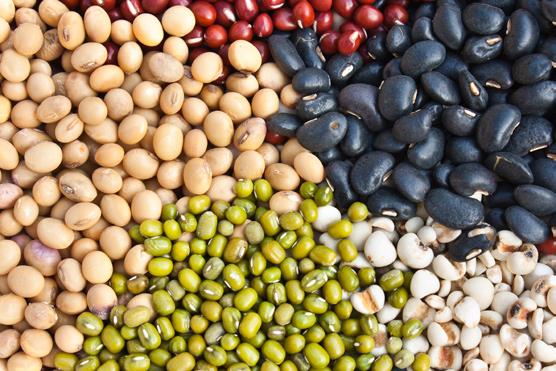
Fruit has nutrients with antiinflammatory properties, but it’s especially worth mentioning pineapple, which contains the enzyme bromelain, which has inti-inflammatory properties, and papaya which contains papain, another enzyme, as well as vitamins C, E, lycopene and beta carotene.
Beans, peas, lentils, and chickpeas, are rich in fibre, resistant starch, plant protein, vitamins and minerals. They enhance the gut microbiome, and regular consumption ensures a healthy immune system.
Pro-inflammatory foods – eat fewer of these
Food Properties
Omega 6 oils
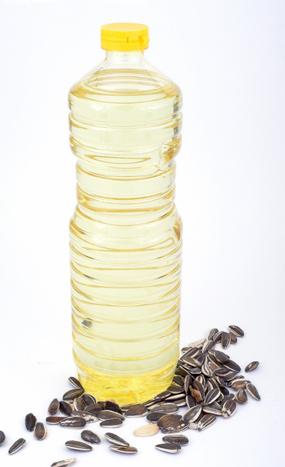
Omega 6 foods
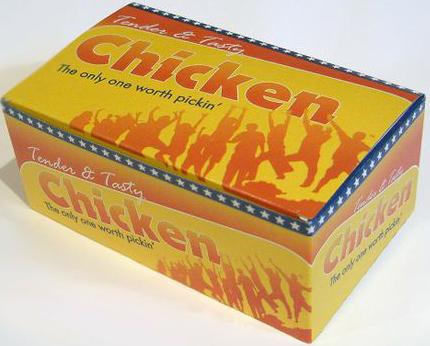
Sugary foods and drinks
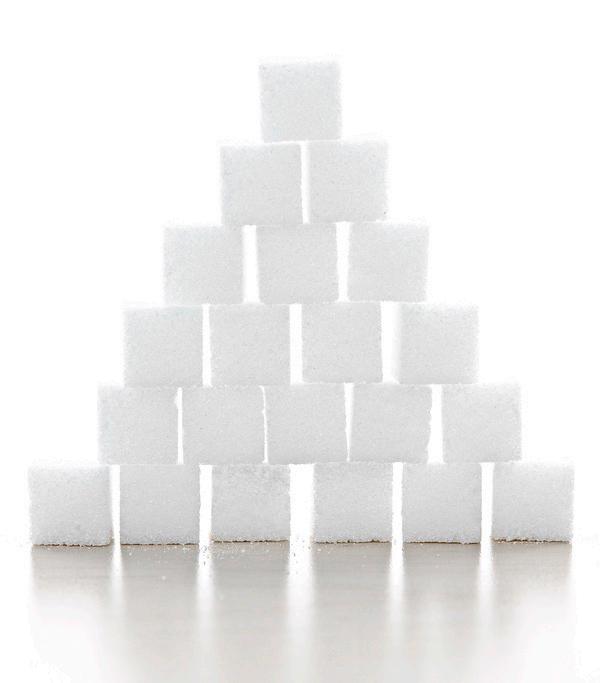
Omega 6 fats, predominantly found in sunflower, corn, and soy bean oil, have pro-inflammatory properties, which are exacerbated when these oils are refined.
Refined grains, ultra processed foods, and chicken are high in proinflammatory omega 6 fats. These oils are primarily used in the preparation of processed foods, and chicken are fed refined grains high in omega 6 which fatten them up quickly.
Sugary foods and drinks, just like refined grain foods made with white flour, dramatically raise blood sugar levels, promote inflammation, and are very low in nutrients.
Food Properties
Fast food
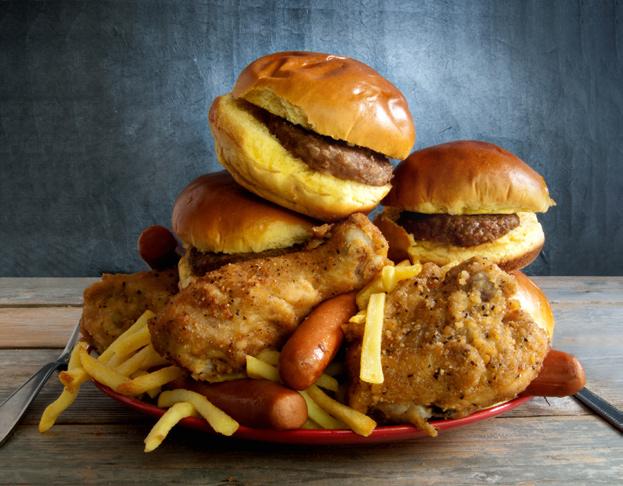
Processed Meats
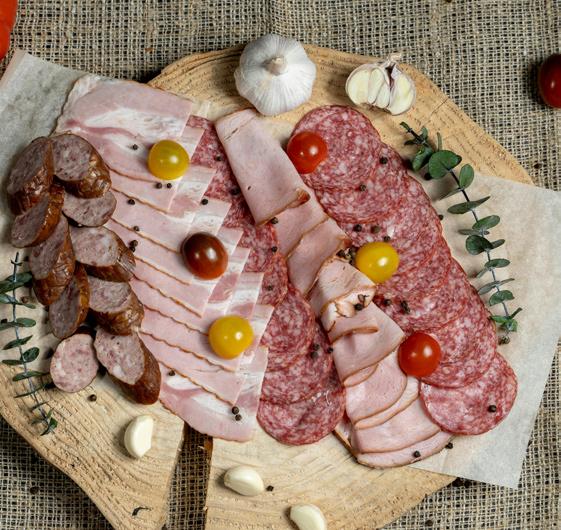
Fast food is often high in salt, sugar, processed omega 6 oils, and trans fats, all of which are proinflammatory. Highly refined oils also produce free radicals, which are highly inflammatory.
Bacon, sausages, hot dogs, chorizo, and salami are high in saturated fat, salt, and nitrates, which can increase blood pressure and contribute to inflammation.
Other factors
Taking a holistic approach to eliminating back pain means taking a look at all aspects of your lifestyle. In addition to diet and physical activity, you should also consider the bed you sleep on, the pillow you rest your head on, your desk/ workstation, your furniture, the handbag you carry, and how high your shoes are.
Smokers are especially vulnerable to back pain; this could be because nicotine and other chemicals found in cigarettes are pro-inflammatory and restrict the flow of nutrient-rich blood to tissues and organs around the body.
Alcohol dehydrates the body and in excess is pro-inflammatory. Try to drink in moderation when you can, and if you’re a regular drinker, have a few alcoholfree days per week and never drink in excess.
Backcare, Exercises for Back Pain, 2020. Accessed from: https://backcare.org.uk/wp-
1. content/uploads/2020/02/901-Exercises-for-back-pain.pdf Accessed: September 2025
NHS Cornwall and Isles of Scilly, Inflammatory Back Pain in Adults. 2021. Accessed from:
2. https://rms.cornwall.nhs.uk/primary_care_clinical_referral_criteria/primary_care_clinical_ referral_criteria/rheumatology/inflammatory_back_pain_in_adults. Accessed: September 2025
Tonelli Enrico V, Hébert JR, Mugford G, et al. Assessing Diet and Musculoskeletal Pain
3. in Adults: Results From a Cross-Sectional Analysis of the National Health and Nutrition Examination Survey (NHANES). American Journal of Lifestyle Medicine. 2023;0(0). doi:10.1177/15598276231189682
Shin D, Hong SJ, Lee KW, Shivappa N, Hebert JR, Kim K. Pro-inflammatory diet associated 4. with low back pain in adults aged 50 and older. Appl Nurs Res. 2022 Aug;66:151589. doi: 10.1016/j.apnr.2022.151589.
Stromsnes, K., Correas, A. G., Lehmann, J., Gambini, J., & Olaso-Gonzalez, G. Anti-
5. Inflammatory Properties of Diet: Role in Healthy Aging. Biomedicines. 2021. 9(8), 922. https://doi.org/10.3390/biomedicines9080922
6. in Clinical Practice. 2017. 32: 318-325. https://doi.org/10.1177/0884533617700353
Ricker, M.A. and Haas, W.C. Anti-Inflammatory Diet in Clinical Practice: A Review. Nutrition

